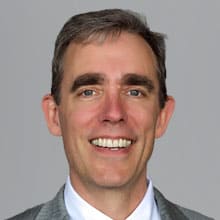Inside Angle
From 3M Health Information Systems
Why supporting independent practices is a good thing and ideas on how to do it
The work of Advanced Primary Care (APC)1 is different from what most primary care practices do today. In addition to using queueing theory and technology portals to provide access and continuity of care, along with multidisciplinary teams to meet the physical, mental health, and social needs that impact health and wellbeing, and software to track prevention reminders and chronic disease gaps in care, APC coordinates care within the context of a person’s social and spiritual environment.
As if this is not enough, a practice must consume data from health information exchanges, hospitals, and health plans. They must understand risk adjustment methodologies that provide signals about a person’s risk of hospitalization and then assess that understanding nuanced by social deprivation scores that are based on where the person lives plus responses to individual surveys.
This is what we’re asking primary care practices to do, in addition to tracking a long list of processes within the practice and reporting these data in different formats, combinations of metrics, and timing to various health plans and reporting agencies.
We have trained primary care clinicians to devolve into prescription-writing referral-making machines. This is why so many say that they’re looking forward to getting out of medicine as soon as possible.
It doesn’t have to be this way.
If we fully resource the work of primary care (e.g., shifting from around 5 percent of the health care dollar to about 15 percent)2 we must help these clinicians and practices adopt new tools and processes to do this work. We might ask all independent practices to join hospital systems, but this often adds costs (e.g., new facility fees) without commensurate improvement in quality.3 This also flies in the face of evidence that provider groups not tied to hospitals outperformed hospital-owned groups in some value-based purchasing demonstrations.4
If we want to help primary care clinicians and practices remain independent and achieve high-performing outcomes, we could use the highly successful federal Agricultural Extension Cooperative as a model. There are provisions in the Affordable Care Act that – when funded – would support this work. If you want to move boldly, state Medicaid agencies, employers, managed care organizations and health systems could individually or jointly fund this work. I have the sense that most are ready for substantive change to get better outcomes. It’s time to act.
Dr. Gordon Moore is Senior Medical Director, Clinical Strategy and Value-based Care for 3M Health Information Systems.
_________________________________________________________________________________________________
- Jonas, Wayne B. “A New Model of Care to Return Holism to Family Medicine.” The Journal of Family Practice 69, no. 10 (December 2020): 493–98.
- Kempski, Ann. “2020 PCC Evidence Report.” Primary Care Collaborative (December 2, 2020).
- AJMC. “Hospital Acquisition of Independent Physician Practices Continues to Increase.” Accessed March 4, 2021.
- Johnston, Kenton J., Jason M. Hockenberry, and Karen E. Joynt Maddox. “Building a Better Clinician Value-Based Payment Program in Medicare.” JAMA 325, no. 2 (January 12, 2021): 129–30.


